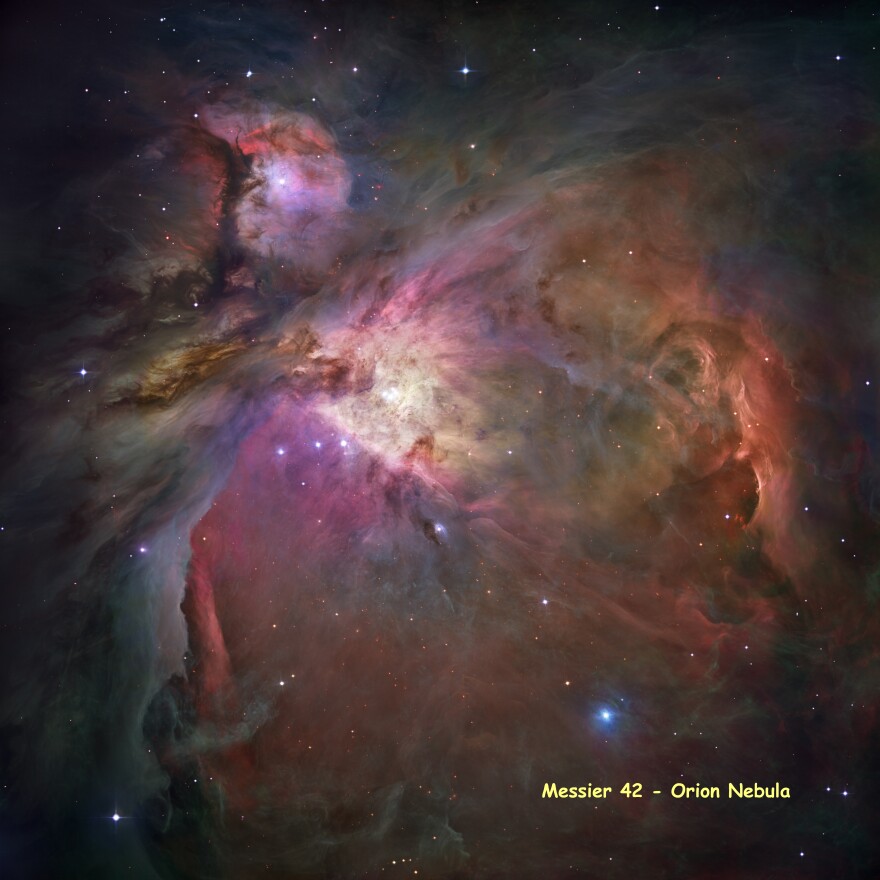If you have attended an astronomy event in the summer, you probably observed Messier objects, such as the Swan Nebula (Messier 17) or the Great Hercules Cluster (Messier 13). Charles Messier was a French astronomer in the 18th century. While his interest was discovering comets, now he is best known for the list of Messier objects, which was published between 1774 and 1781.
Because of the motion of the Earth around the Sun, the night skies are different in winter compared to summer. This includes the Messier objects. Here are three examples. All are visible with the naked eye or binoculars.
The first object is M45, the Pleaides. This is an open star cluster in the constellation Taurus, the Bull. M45 is about 440 light years distant. There are about 1,000 stars in the cluster; but only a few dozen are visible even with binoculars.
One of my favorites is Messier 79, a globular star cluster in the constellation Lepus, the Rabbit. M79 is unusual. Most globular clusters are near the center of our galaxy and are visible only in the summer. M79 is located on the outskirts of the galaxy and is one of a very few winter globular clusters. M79 is about 40,000 light years distant and contains about 150,000 stars. While visible with binoculars, a telescope of 10 inches aperture or larger is needed to see individual stars.
Perhaps the most spectacular winter object is the Messier 42, the Orion Nebula. It is a vast collection of gas and dust that is forming new stars. These same new, hot stars are ionizing the hydrogen in the surrounding gas, which then emits red, one of the characteristic colors of an emission nebula.
Come to one of the winter events at the Black Canyon of the Gunnison National Park and look through telescopes at winter Messier objects. These events are presently planned for February 25 and March 25 at the South Rim Visitor Center, beginning at 7 pm. Contact the Park Visitor Center for details at 249-1914, ext 243.

Western Slope Skies is produced by members of the Black Canyon Astronomical Society. This episode was written & recorded by Bryan Cashion.



